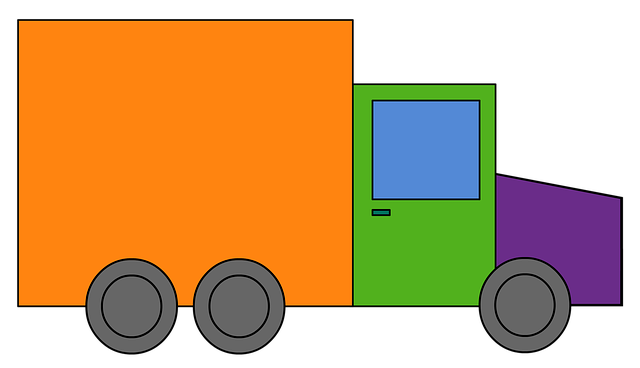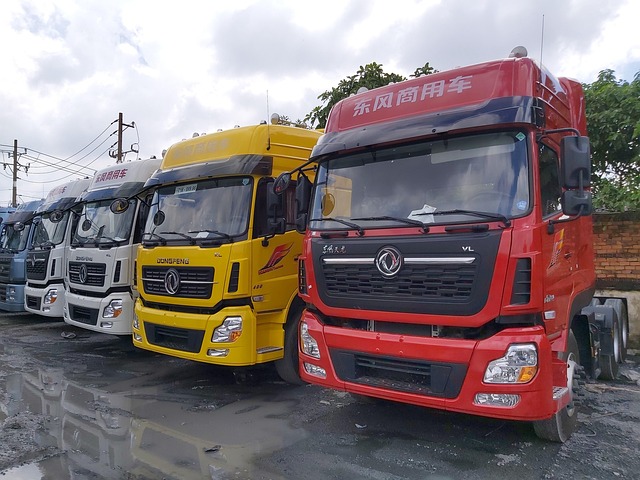Looking to register your car in California? This comprehensive guide walks you through every step, ensuring a smooth process. First, understand the state’s requirements for car registration, then gather essential documents including proof of insurance and ownership. Use an online VIN verifier to confirm your vehicle’s identification number. Complete the registration application, pay the necessary fees, and receive your certificate—it’s that simple!
- Understand the Requirements for Car Registration in California
- Gather Necessary Documents for Car Registration
- Verify the Vehicle's VIN (Vehicle Identification Number) Using an Online Tool
- Complete the Car Registration Application Process
- Pay the Required Fees and Receive Your Registration Certificate
Understand the Requirements for Car Registration in California

Before diving into the registration process, it’s crucial to understand the requirements for car registration in California. The Golden State has specific guidelines that all vehicle owners must adhere to. One key aspect is ensuring your car passes a safety inspection, which often involves a mobile vin verifier or a traditional vin inspection. This checks critical components like brakes, lights, and emissions systems to guarantee they meet state standards. Additionally, you’ll need to present important documents such as proof of insurance, a valid driver’s license, and the vehicle’s title.
Another requirement is confirming that your car has the proper emissions control system for its model year. California is known for its stringent environmental regulations, so it’s essential to ensure your vehicle meets these standards. A mobile vin verifier can assist in this process by quickly checking the vehicle identification number (VIN) and providing valuable data on the car’s history, including any previous damage or repairs. This ensures a smooth registration experience, avoiding potential delays or issues down the line.
Gather Necessary Documents for Car Registration

Before you begin the registration process, ensure you have all the required documents. The key document is the Vehicle Identification Number (VIN) verifier, which can usually be obtained from your vehicle’s manufacturer or a reliable online source. This unique 17-character code is essential for identifying your car and verifying its history.
Additionally, gather other important paperwork like proof of ownership, a valid driver’s license, and current registration (if transferring a vehicle). For convenience, consider using a mobile VIN inspection service to streamline the process and avoid potential delays. These services offer on-site or remote verifications, making it easier to have your car ready for registration.
Verify the Vehicle's VIN (Vehicle Identification Number) Using an Online Tool

Before proceeding with registration, it’s crucial to verify your vehicle’s VIN (Vehicle Identification Number). This unique identifier provides a wealth of information about your car, including its make, model, and year. Thankfully, there’s an easy way to check this using an online vin verifier tool.
Simply enter your VIN into the designated field on the chosen online platform, which could be offered by your local DMV or third-party services specializing in vehicle history reports. Within seconds, you’ll receive a detailed report outlining the vehicle’s past, including its ownership history and any reported accidents or damage. This step is essential for ensuring that the car is in good condition and has not been reported stolen, which would hinder registration efforts. For convenience, consider opting for a mobile vin inspection or verification service to save time and effort.
Complete the Car Registration Application Process

To complete the car registration application process in California, start by gathering all necessary documents. This includes your vehicle’s registration from a previous state (if applicable), proof of insurance, and identification such as a driver’s license. Additionally, you’ll need to undergo a VIN inspection or vin verification using an approved method like a mobile vin inspection to ensure the vehicle’s authenticity.
Once all documents are in order, submit your application at a California Department of Motor Vehicles (DMV) office or online. If going through the DMV, expect to wait in line and possibly pay additional fees for any necessary tests or inspections, including a vin inspection. When applying online, ensure you follow the step-by-step process carefully, providing accurate information throughout.
Pay the Required Fees and Receive Your Registration Certificate

After completing your vehicle’s inspection, it’s time to pay the required fees and receive your registration certificate. The California Department of Motor Vehicles (DMV) will assess various charges, including a registration fee, vehicle clearance fee, and possibly a smog certification cost if applicable. You can typically make these payments online, by mail, or in person at a DMV office. Upon successful payment, the DMV will process your application and issue your registration certificate, which confirms that your car is legally registered and authorized for road use.
For convenience, many individuals opt for mobile vin verification services, including a mobile vin verifier or mobile vin inspection, which streamlines the process by allowing a professional to conduct the necessary checks remotely, ensuring accuracy and saving you a trip to the DMV. This method is especially beneficial for those with busy schedules or accessibility issues.
Registering a car in California involves understanding the state’s requirements, gathering essential documents, verifying the Vehicle Identification Number (VIN) using an online tool, completing the registration application process, and paying applicable fees. By adhering to these steps and utilizing a VIN verifier, you can ensure a smooth car registration experience in the Golden State.
